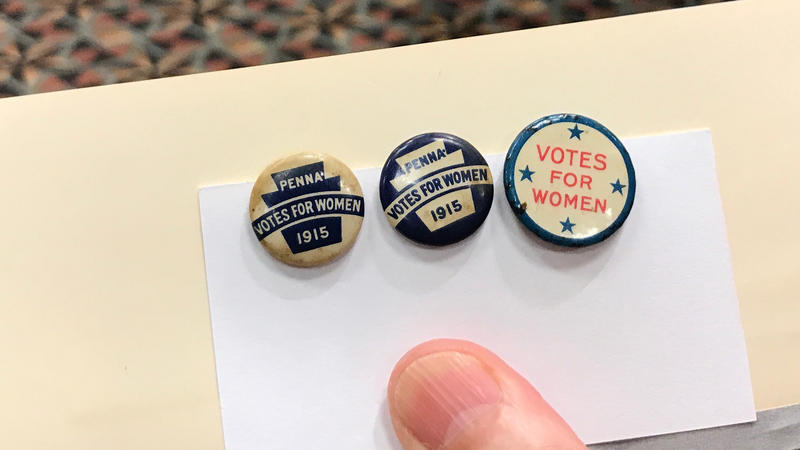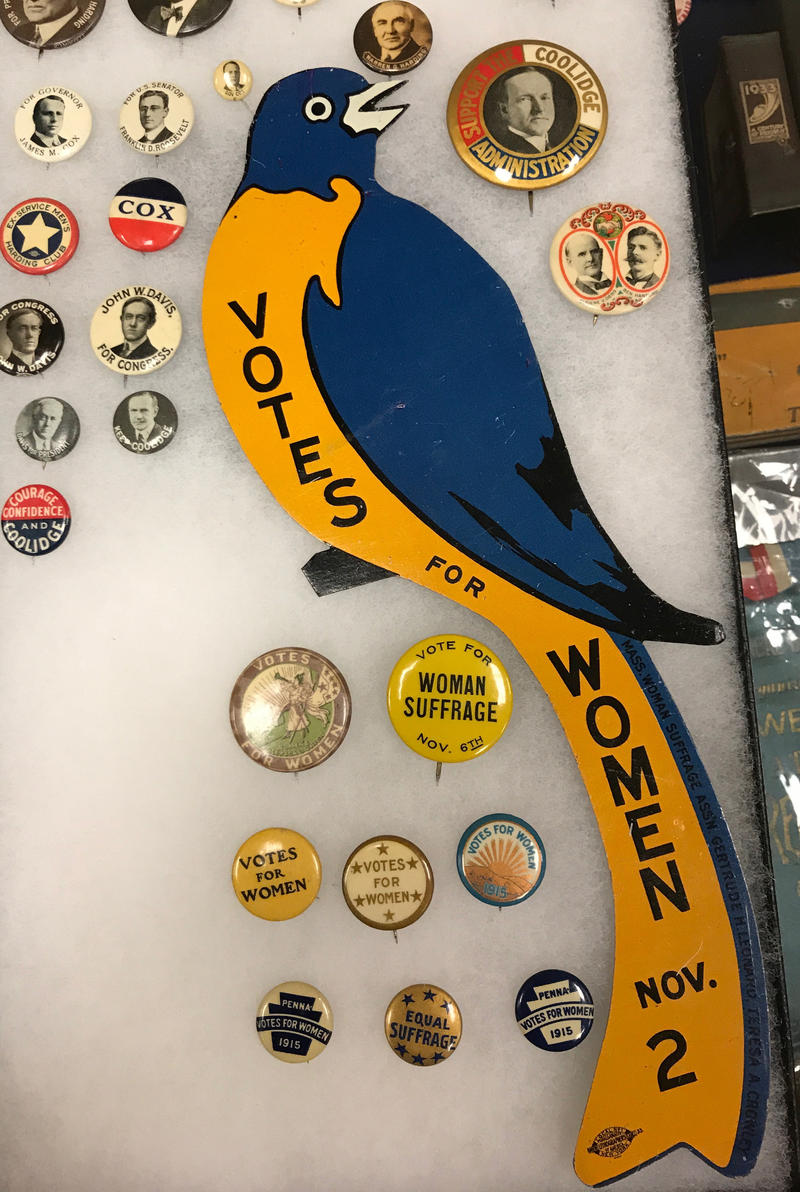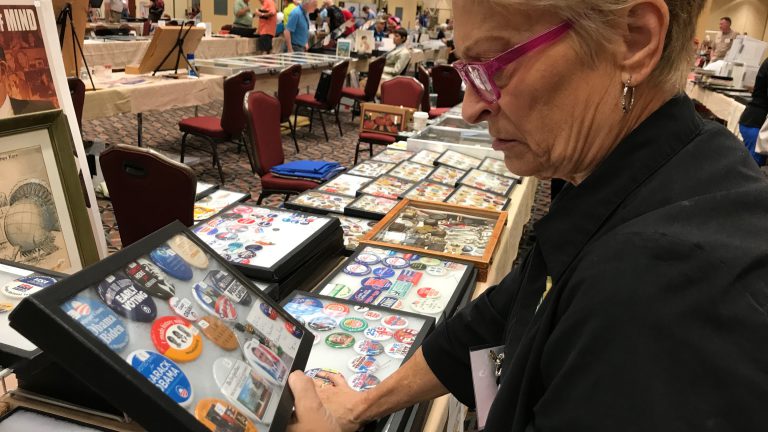Just before noon on a recent Saturday, a group of political memorabilia collectors jostled for a spot around an exhibit table, checking their final bids in a silent auction.
They were in Springfield at the national American Political Items Collectors (APIC) conference. Most of the items up for auction at this table featured presidential candidates.
But Catherine Palczewski was in a bidding battle over three small buttons from the early 1900s that said “Votes for Women.”
“The bids were going up by three or four bucks. I just upped it by like 15,” she said, minutes before the auction closed.
Two buttons were from the campaign to give women the right to vote in Pennsylvania. The third was from the National Women’s Party.
Palczewski won the pins for just over $100. She teaches communications at the University of Northern Iowa and plans to use the buttons in her research and in the classroom.
“There’s something material and real, almost like you’re touching the people who did the activism back in time,” she said.
Nearly 100 years after women won the right to vote, competition for the postcards, sashes and other items from the suffrage movement is growing fiercer in a collectable market still largely dominated by men.
“Yes, it’s a white, old man group. And that’s a shame,” said Jeannine Coup, one of a handful of women in APIC. She says there are women involved, but she’d like to see more.
Coup is a former history teacher from Lancaster, Pennsylvania, who collects home-front items – banners, posters and household things that show support for servicemen during wartimes, as well as stuff from the women’s suffrage movement and President Theodore Roosevelt’s campaigns.
“The beauty of it, graphically and the color – they are awesome,” she says of her collection. “Home-front uses flags for everything. Women’s suffrage – there’s women and babies and flags and slogans.”

She thinks interest in the pins and sashes from the fight for women’s right to vote started growing a decade or more ago.
“At one time, women’s suffrage and civil rights [items were] lower priced – and many people got into it then,” she said. People who wanted to get into the hobby could start small, at maybe a dollar a button and build up a collection that way.
It was less about the meaning of the items, and more about the thrill of the hunt.
“But now those prices have risen tremendously,” she said.
Ken Florey has noticed the trend as well. He’s one of the more well-known women’s suffrage collectors and sellers.
He says there’s a downside to the increased popularity – the rising prices edge casual collectors out of the market.

“I would love to have a bunch of cheap suffrage items to sell to people who just would like to have a memento or two,” he said. “They’re not serious collectors, but it is a meaningful thing to them.”
On his table at the convention, a button with “Vote No For Women’s Suffrage” is priced at $35. Pro-suffrage ones range from $75 to $1,000 for a bright yellow pin with black bold lettering that reads “Votes For Women New Jersey.”
Florey says one way to share the hobby is to have scholars collect memorabilia and publish it in books, scholars like Palczewski, who won the buttons in the auction earlier.
She’s writing a book on the final ten years of the suffrage movement. She says some of the same arguments for and against allowing women to vote come up in political discussion today.
“Think about some of the arguments used against Hillary Clinton – that women are too physically weak to assume the presidency. There were tons of arguments that women were too weak to deserve the right to vote,” she said.
Palczewski says voting rights must be guarded and fought for, and that studying suffrage movements, particularly the stuff from those movements, reminds us of the stakes.
“The post cards, the fliers, the hand-bills, the toothpick holders, they make history seem real in a way that digital images or books that tell stories about what happened may not,” she said.


